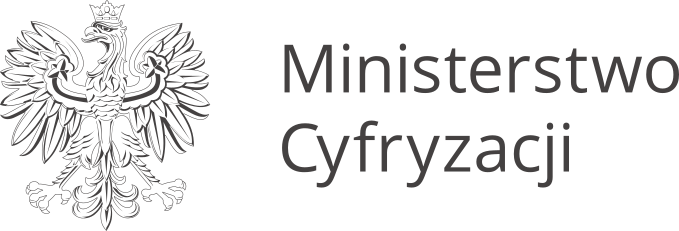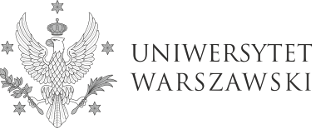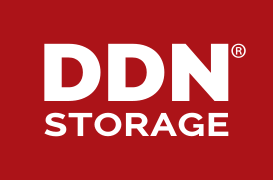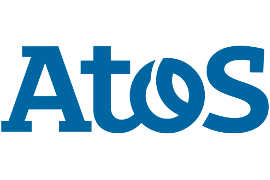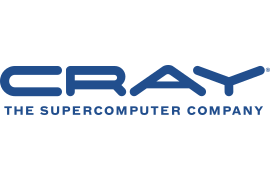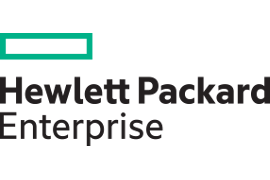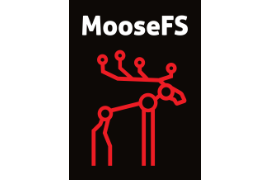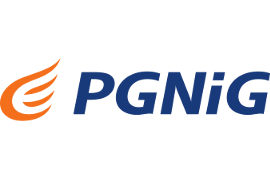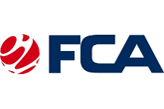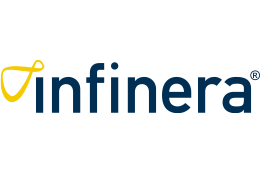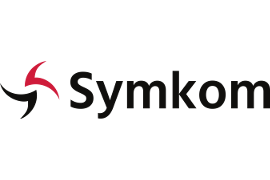Tutorials Programme
Please register for the tutorials of your choice here.
Date:
Thu, March 15
Venue for All Tutorial Sessions:
Nałęcz Institute of Biocybernetics and Biomedical Engineering, Polish Academy of Sciences,
4, Ks.Trojdena str., 02-109 Warsaw, Poland
Morning Sessions
Tutorial 1:
D-Wave Systems: An inTroduction to Programming a quantum computer
- Time:
- 9.00am – 1.00pm
- Breaks:
- Morning Tea Break – 10.30am – 11.00am
Lunch Break – 1.00pm – 2.00pm - Presenters:
- Andy Mason, Sales Director, D-Wave Europe
Sheir Yarkoni, Technical Analysist, D-Wave Europe - Abstract:
- Quantum computing has progressed from ideas and research to implementation and product development. There are multiple physical devices capable of providing controllable evolution of a quantum wavefunction which could form the
basis for a quantum computer. The 2000-qubit D-Wave System uses an annealing/adiabatic architecture which natively solves discrete optimization, and probabilistic machine learning problems.
Our goal is to expand attendees’
understanding of quantum computing as implemented on the D-Wave System and where it fits in a computing environment (or maybe work flow). - Important Notes:
- Participants will have access to 128 qubit simulators (using their own laptops) and the opportunity to implement a number of programming examples as well as view live demos on a 2000 qubit D-Wave System.
It is recommended attendees
have knowledge comparable to an M.Sc. or higher in computer science, mathematics or physics or equivalent, or otherwise have sufficient familiarity with algorithms and data structures and experience implementing algorithms
in C/C++, Matlab or Python.
Tutorial 3:
Advanced scientific visualization with VisNow platform
- Time:
- 9:00am – 12.30pm
- Brief agenda:
-
- Introduction to Scientific Visualization and Visual Analysis.
- Visualization systems and paradigms
- Generic data structures
- Introduction to VisNow
- Hands-on Session #1 – 2D data visualization
- Hands-on Session #2 – 3D data visualization
- Hands-on Session #3 – Vector data visualization
- Hands-on Session #4 – Unstructured data visualization.
- Presenters:
- Bartosz Borucki, Interdisciplinary Centre for Mathematical and Computational Modelling University of Warsaw, Poland
Krzysztof Nowiński, Interdisciplinary Centre for Mathematical and Computational Modelling University of Warsaw,
Poland - Abstract:
- Visual analysis is one of the most powerful tools for data exploration and interpretation. It takes advantage of visualization techniques and allows scientists to work with their research data in interactive and intuitive way.
In today’s HPC environment and Big Data era, data analysis techniques, together with visualization, gain on importance. However, the amounts of data and the sizes of single datasets impose the need for adequate software tools.
In this tutorial we will address this problem by providing participants with strong tool for data processing, visualization and visual analysis – VisNow, an open source generic platform based on data flow paradigm. The goal
of this tutorial is to introduce the audience to the concept of visual analysis, show basic ideas of scientific visualization and to go step-by-step through several case studies in hands-on sessions based on our platform. Problems
of visualization of common HPC data structures, including 2-D and 3-D, scalar and vector, regular and unstructured data will be covered and adequate elements of the software described to give participants the basics of VisNow
usage.
Tutorial 5:
Maxeler Technologies: Practical Dataflow Computing: From HPC to Cloud
- Time:
- 9:00 am – 12:30 pm
- Presenters:
- Tobias BECKER, Maxeler Technologies
- Abstract:
- Maxeler Technologies pioneers a new Multiscale Dataflow Computing model that centres on maximal performance and efficiency. By offloading computations to dedicated Data Flow Engines (DFEs), the typical bottlenecks of the conventional
Von Neumann architecture are avoided, resulting in 20-50x higher performance and energy efficiency. This has been demonstrated across many application domains including machine learning, finance, security and scientific computations.
The workshop introduces the Maxeler Dataflow compute model and its associated high-level programming paradigm. We cover practical application development and dedicated optimisations across various layers of abstraction. Furthermore,
we cover the practical deployment of Dataflow technology from conventional on-premise HCP to public Cloud. Amazon EC2 F1 Instances are compatible to the latest generation MAX5 DFEs and open up new exciting opportunities to
perform Dataflow computing in the Cloud. We illustrate how developers can scale elastically from an on-premise Dataflow system into the Cloud to cover peak demand. Dataflow computing in the Cloud also allows academics to carry
out research without investing into specialised compute infrastructure.
Tutorial 7:
Microsoft Azure — the best public cloud for HPC
- Time:
- 9:00 am – 12:30 pm
- Brief agenda:
-
- Introduction to HPC on Azure and lab environment (1 hour)
- Hands-on lab session (3 hours)
- Deploying Linux RDMA Infiniband cluster with Azure CLI,
- Deploying SLURM cluster from ARM template,
- Deploying HPC cluster from CycleCloud template,
- Image processing with Azure Batch service,
- Running TCFD simulation in Ubercloud container.
- Presenters:
- Tomasz Józefiak, Microsoft Poland
Mike Kiernan, Microsoft
Reha Senturk, The Ubercloud - Abstract:
- Microsoft Azure offers the best and the most highly-optimized infrastructure for HPC among all public cloud providers:
- high-end multicore CPUs for compute-intensive calculations,
- NVIDIA GPUs for accelerated computing and visualization,
- RDMA InfiniBand interconnect for real scalability of MPI jobs,
- bare-metal Cray supercomputer infrastructure for the most demanding HPC workloads.
Azure also offers platform services like Azure Batch, VM scalesets and CycleCloud which assist in easy deployment, management and scaling of HPC workloads in the cloud environment.
This workshop aims to demonstrate different ways of using Azure for running HPC jobs. We’ll start with an introductory presentation of HPC services on Azure and the workshop environment, followed by a hands-on lab session. Our instructors will walk step-by-step through the lab content. Participants will receive free Azure passes and will be able to execute the labs following the instructor guidance or at their own pace. - Prerequisites:
-
- Please bring your own laptop with any OS – Windows, Linux, MacOS
- In order to use Azure pass that you will receive during the workshop, please create your Microsoft Account: https://account.microsoft.com/
- In case of any questions please contact us via email: azurepl@microsoft.com
Afternoon Sessions
Tutorial 2:
Introduction to Numerical Computing with Julia
- Time:
- 1:30pm – 5.00pm
- Brief agenda:
-
- What makes Julia fast – language design principles.
- Explanation of the sample computational problem that will be solved during the workshop.
- Parallel computing in Julia on a single machine.
- Using Julia in AWS Cloud.
- Using Julia on ICM computing cluster.
- Presenters:
- Bogumił Kamiński, SGH Warsaw School of Economics, Poland
Przemysław Szufel, SGH Warsaw School of Economics, Poland - Abstract:
- Julia language was designed to deliver dramatic improvements in simplicity, speed, scalability, and productivity to solve massive computational problems. The goal of this workshop is to give the participants hands-on experience
of running massively distributed numerical experiments using Julia language. The example problem is a large scale stochastic simulation-optimization task (a description of the employed algorithms is presented in this paper). The computations will be presented on two environments: ICM computing
cluster and a Spot Fleet of EC2 instances in the AWS Cloud. We will show how to build and run a cluster having at least 100 nodes in Julia language. - Important Notes:
- If participants want to run the computations themselves it is advised that they have a notebook with SSH client installed and an AWS account (free coupons for computations on AWS will be provided).
Tutorial 4:
High Performance Computing and Big Data analitics with PCJ and Java
- Time:
- 1:30pm – 5.00pm
- Brief agenda:
- The half dayr tutorial comprises three parts parts, with time for discussion at the included coffee breaks. The tutorial is organized in the form of hands-out with the short introduction. We would like to get participants involved
in the programming of simple examples provided by the organizers as well as computational kernels brought by the participants.- Part 1 (1 hour) briefly covers the PGAS programming model and presents details of the PCJ library. It provides overview of the library and presents examples of the typical programming tasks. Examples of the parallelization
of the most popular programming kernels will be provided. - Part 2 (1.5 hour) is design as practical introduction to the PCJ. Participants will write and execute parallel applications starting from the “Hello world”, trough different communications schemas up to the parallelization
of the selected computational kernels. - Part 3 (1 hour) will focus on more advanced applications including problems suggested by the participants.
- Part 1 (1 hour) briefly covers the PGAS programming model and presents details of the PCJ library. It provides overview of the library and presents examples of the typical programming tasks. Examples of the parallelization
- Presenters:
- prof. Piotr Bała, Interdisciplinary Centre for Mathematical and Computational Modelling University of Warsaw, Poland
dr Marek Nowicki, Nicolaus Copernicus University, Poland
dr Łukasz Górski, Interdisciplinary Centre for
Mathematical and Computational Modelling University of Warsaw, Poland - Abstract:
- The goal of the tutorial is the presentation of the PCJ library and its application for parallelization of example programs (computational kernels). The attendees will get familiar with the PGAS programming models used by the PCJ
library. The tutorial will focus on the practical development of the parallel codes using Java, therefore, the main part of the tutorial will be in the form of hands-on. The PCJ library runs on any HPC system equipped with
Java runtine environment. It shows good performance and scalability up to 100k+ cores. The PCJ library has been already used to parallelize different benchmarks as well as large scale parallel applications such as raytracing,
FFT, MapReduce, BFS or Genetic Algorithm. The PCJ library (http://pcj.icm.edu.pl) implements partitioned global address space (PGAS) model. The PCJ does not extend nor modify language syntax. The PCJ library put emphasis on
compliance with Java standards. The programmer does not have to use additional libraries, which are not part of the standard Java distribution. Compared to the other solutions PCJ does not need a dedicated compiler to preprocess
code.
Tutorial 6:
Numerical Algorithms Group Ltd.: Performance Analysis: An introduction to the tools and performance analysis methodology used in POP CoE
- Time:
- 1:30 pm – 5:00 pm
- Brief agenda:
-
- Introduction to performance analysis and POP CoE methodology.
- Performance analysis with Paraver and Scalasca for parallel codes.
- Parallel I/O Profiling and Darshan profiling tool.
- Hands-on session with profiling tools.
- Presenters:
- Jon Gibson, Numerical Algorithms Group Ltd., Great Britain
Wadud Miah, Numerical Algorithms Group Ltd., Great Britain - Abstract:
- POP CoE (Performance Optimisation and Productivity Centre of Excellence) is funded by the Horizon 2020 programme to help people write more efficient parallel. We will present the systematic approach used to analyse and optimise
parallel codes and an introduction to some open source profiling tools used within the project. Measuring application performance often results in large amounts of data that is difficult to handle or interpret beyond some simple
first observations. The methodology used within POP CoE provides a quantitative way of measuring the relative impact of the different factors inherent in parallelisation, each metric reflecting a common cause of inefficiency.
This provides the knowledge necessary to decide the best course of action to get performance via reproducible and comparable measurements of the performance. POP CoE is a collaboration between Barcelona Supercomputing Center,
High Performance Computing Center Stuttgart, Jülich Supercomputing Centre, Numerical Algorithms Group Ltd, RWTH Aachen and TERATEC.
Tutorial 8:
Basics of High Performance Computing systems at ICM
- Time:
- 1:30 pm – 5:00 pm
- Presenters:
- Maciej Marchwiany, Interdisciplinary Centre for Mathematical and Computational Modelling University of Warsaw, Poland
Maciej Szpindler, Interdisciplinary Centre for Mathematical and Computational Modelling University of Warsaw, Poland - Abstract:
- This tutorial aims at basic usage scenarios of High Performance Computing systems available at ICM. Agenda covers system access, creating and submitting user jobs, user environment, custom application codes enabling. Common scenarios will be discussed with step-by-step approach. Hands-on session is included. Registered users are the target audience of the tutorial.
- Important Notes:
- Tutorial language is Polish.
Tutorial 9:
Intel Corporation: Intel Software Tools for HPC and Data Analysis – Practical Session
- Time:
- 1:30 pm – 5:00 pm
- Presenters:
- Dmitry Sivkov, Technical Consulting Engineer, Intel
Olga Andrianova, Business Development Manager, Intel
Robert Adamski, HPC AE – EMEA Territory, Intel - Abstract:
- Intel Software helps developers and end users to get a full performance of their HPC and Data Analytic applications. Intel provides a wide range of tools and libraries that can be used for numerous scientific and industry applications.
This practical training is targeted to give an overview of tools and aspects of usage, basic practices of optimizing Python* application, starting with Intel® Distribution for Python, performance profiling with Intel® VTune™ Amplifier, speedup code with Intel® Advisor, and distributed HPC/AI usage.
Live demo on HPC/AI cluster! - Important Notes
- Training audience: software developers, Data Analytics, Data Scientists, Researchers.
Attendees will get personal license for Intel® Software used in the training.

